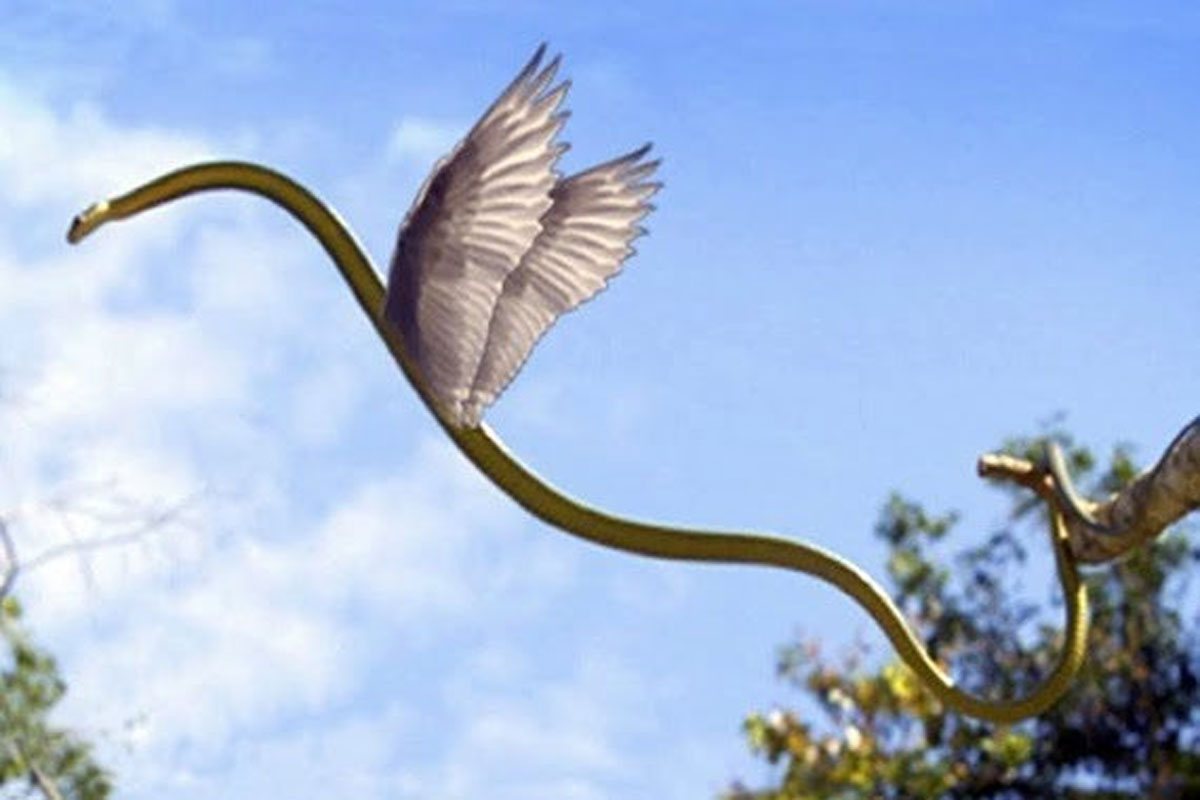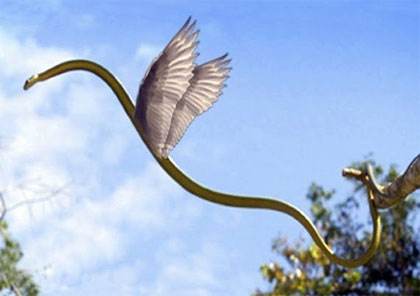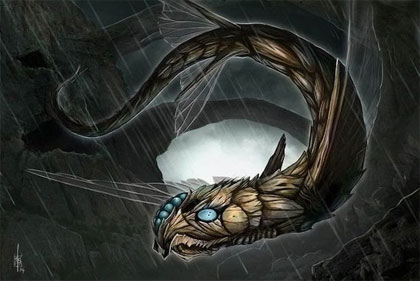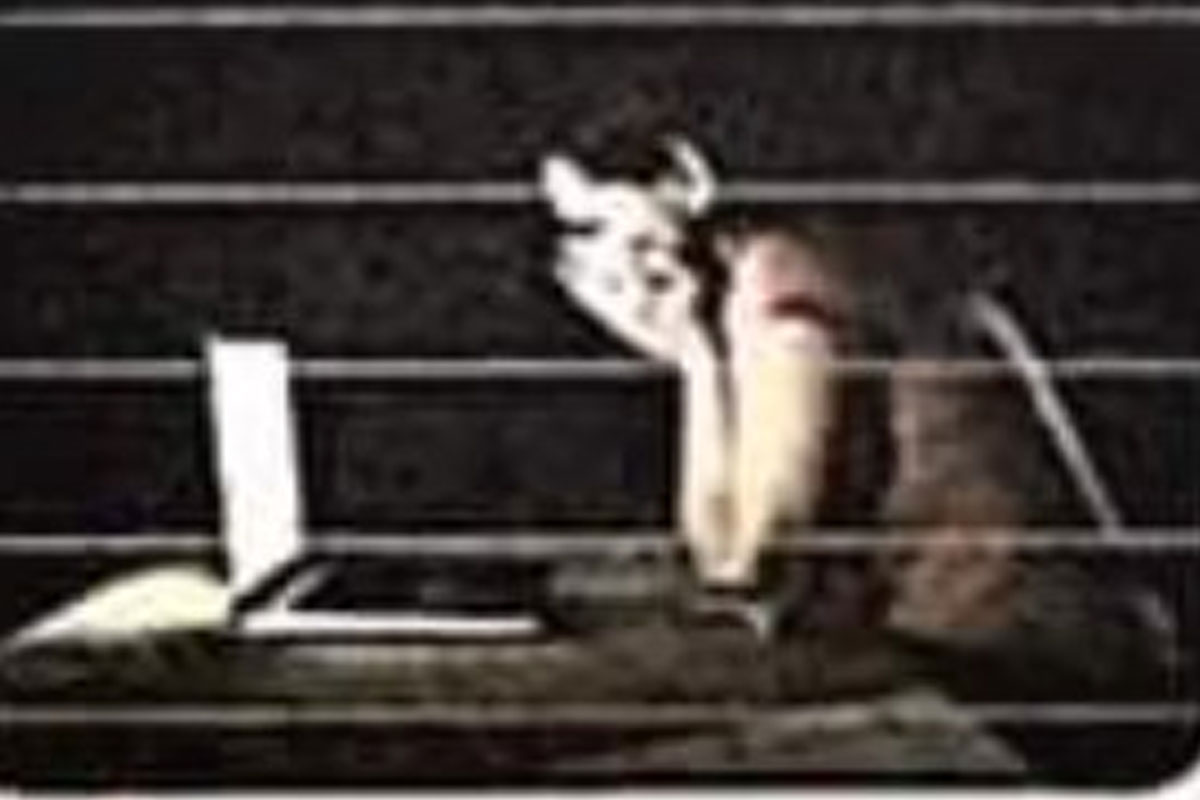
Bizarre Accounts of Mysterious Flying Serpents
Brent Swancer March 18, 2022
In the world of mysterious undiscovered beasts we have creatures of all shapes and sizes, with some being more bizarre than others. One corner of cryptozoology that has quite a few rather strange stories is that of various flying, winged reptiles, which have popped up in numerous cultures across the world. Perhaps standing out among the oddest of these are the various accounts of flying snakes, and here we will delve into the weird world of such stories.
The region of Arabia has long been said to be the home of some sort of flying serpent, notably in the area around the Arabian Sea. They were typically described as looking like water snakes, only with bat-like wings upon which they could take flight, sometimes in vast numbers. They were said to lurk about under frankincense trees, and farmers harvesting these trees were so afraid of them that they would burn styrax, which is the resin of the Liquidambar tree, under the trees, which was said to drive the serpents away. The only time when the region was supposedly safe from these malicious winged snakes was during spring, when they were said to migrate to Egypt. Far from mere folklore, the Arabians described these as real animals, giving a good deal of detail on their behavior and life cycle. For instance, the female was said to kill the male during mating, that the young would eat their way out of the womb, killing the mother, and that their primary predator was ibis birds. Occasionally these winged snakes were seen by outsiders, and in the fourth century B.C., Greek historian Herodotus passed through the region and learned much about these creatures from the locals. They told him of the snakes’ habitats and behaviors, even showing him the mountain pass they were said to pass through during their annual migration, and how the ibis birds would congregate there in great numbers during this time to feed on the serpents. He would claim that he had also seen large numbers of skeletons from these snakes at the pass. Herodotus would write of these creatures at length in his tome Histories, saying:
There is a region moreover in Arabia, situated nearly over against the city of Buto, to which place I came to inquire about the winged serpents: and when I came thither I saw bones of serpents and spines in quantity so great that it is impossible to make report of the number, and there were heaps of spines, some heaps large and others less large and others smaller still than these, and these heaps were many in number.” “The region in which the spines are scattered upon the ground is of the nature of an entrance from a narrow mountain pass to a great plain, which plain adjoins the plain of Egypt; and the story goes that at the beginning of spring winged serpents from Arabia fly towards Egypt, and the birds called ibises meet them at the entrance of this country and do not suffer the serpents to go by but kill them. On account of this deed it is, say the Arabians, that the ibis has come to be greatly honored by the Egyptians, and the Egyptians also agree that it is for this reason that they honor these birds. As for the serpent its form is like that of the watersnake; and it has wings not feathered but most nearly resembling the wings of the bat. Let so much suffice as has been said now concerning sacred animals.
Again, Arabia is the most distant to the south of all inhabited countries: and this is the only country which produces frankincense and myrrh and casia and cinnamon and gum-mastich. All these except myrrh are difficult for the Arabians to get. They gather frankincense by burning that storax which Phoinikes (Phoenicians) carry to Hellas; they burn this and so get the frankincense; for the spice-bearing trees are guarded by small Winged Snakes of varied color, many around each tree; these are the snakes that attack Aigyptos (Egypt). Nothing except the smoke of storax will drive them away from the trees . . .So too if the vipers and the Winged Serpents of Arabia were born in the natural manner of serpents life would be impossible for men; but as it is, when they copulate, while the male is in the act of procreation and as soon as he has ejaculated his seed, the female seizes him by the neck, and does not let go until she has bitten through. The male dies in the way described, but the female suffers in return for the male the following punishment: avenging their father, the young while they are still within the womb gnaw at their mother and eating through her bowels thus make their way out. Other snakes, that do no harm to men, lay eggs and hatch out a vast number of young. The Arabian Winged Serpents do indeed seem to be numerous; but that is because (although there are vipers in every land) these are all in Arabia and are found nowhere else. The Arabians get frankincense in the foregoing way.
 Herodotus
Herodotus
Another region long said to be inhabited by flying snakes is the desert of the Karas Region of Namibia, on the southwest coast of Africa. The so-called Namibian Flying Snake supposedly has quite the striking appearance, measuring 9 to 25 feet in length, with a wingspan of 30 feet or more, and being yellowish brown with light spots, or black in color, with the ability to camouflage itself like a chameleon. It is said to be able to produce bioluminescence from a crest on its head, and is known for its loud, roaring vocalizations. They are said to live in caves during the day and come out at dusk, and that they are extremely territorial. Locals are apparently terrified of the beasts, which they believe prey on livestock and even people.
Despite just terrifying locals, these creatures have been reported by outsiders since the days of the first African exploration of the region, and one of the more notable accounts supposedly occurred in 1942, in the vicinity of a farm near Kirris West, in south-west Namibia. The account goes that a farmer named Michael Esterhuise was tending to his flock of sheep when he smelled something like burnt tar and looked to see an enormous snake bounding down a hill before shooting straight up into the air on huge wings a sound like “wind blowing through a pipe” and a “great roaring noise.” Esterhuise would claim to encounter the creature on two more occasions after that, and it was compelling enough that it was investigated by Marjorie Eileen Doris Courtenay-Latimer, the South African museum official who in 1938, brought to the attention of the world the existence of the coelacanth. In 1978 there was another notable sighting, when a French farmer who was tending his cattle and noticed a light approaching him. As it drew closer, he could see that the light was emanating from a crest atop the head of a vast winged serpent, which would swoop down to attack one of his cows and fly off. He would say:
I saw what looked like… as the best matching description I can give you is that it looked like a dragon, it had a white bright light on its head, which was blinding me, the color of it was brown and yellow, it had green eyes, there was a tar-like smell coming from it and it had smoke coming out of its nostrils.
In 1988, professor and explorer Roy Mackal travelled to the region to investigate such reports, and although he was unable to see one of the creatures or gather any evidence, he came away convinced that the creature was real. Europe has its share of such accounts as well, and in particular the woodland around Penllyne Castle, in the county of Glamorgan, seems to be a wellspring for flying snake accounts. The Welsh flying snakes have traditionally been described as being six to nine feet long, having feathers, and as being very beautiful, but at the same time very aggressive and dangerous. They were also supposedly ravenous as well, and often shot at by farmers trying to keep them away from their chickens. In her book Folk-Lore and Folk-Stories of Wales, author Marie Trevelyan writes of these mysterious creatures:
The woods around Penllyne Castle, Glamorgan, had the reputation of being frequented by winged serpents, and these were the terror of old and young alike. An aged inhabitant of Penllyne, who died a few years ago, said that in his boyhood the winged serpents were described as very beautiful. They were coiled when in repose, and “looked as though they were covered with jewels of all sorts. Some of them had crests sparkling with all the colours of the rainbow.” When disturbed, they glided swiftly, “sparkling all over,” to their hiding places. When angry, they “flew over people’s heads, with outspread wings bright and sometimes with eyes, too, like the feathers in a peacock’s tail.” He said it was “no old story,” invented to “frighten children,” but a real fact. His father and uncles had killed some of them, for they were “as bad as foxes for poultry.” This old man attributed the extinction of winged serpents to the fact that they were “terrors in the farmyards and coverts.” An old woman, whose parents in her early childhood took her to visit Penmark Place, Glamorgan, said she often heard the people talking about the ravages of the winged serpents in that neighbourhood.
 Another recent report of a flying serpent of some sort in Wales supposedly happened in 2001 in the area of Powys. In March of that year, a British biologist and a few colleagues were doing some fieldwork in the area when they apparently encountered “a serpentine dragon.” A report on the incident in Strange Magazine says of it:
Another recent report of a flying serpent of some sort in Wales supposedly happened in 2001 in the area of Powys. In March of that year, a British biologist and a few colleagues were doing some fieldwork in the area when they apparently encountered “a serpentine dragon.” A report on the incident in Strange Magazine says of it:
A British biologist and a few colleagues were conducting some research in the area after being notified by a local of “something” strange that was witnessed a month earlier. As they stood at the edge of some woods by a quarry they suddenly looked upon an extraordinary entity. Measuring 3 ft. or so in length, it resembled a serpentine dragon with four short limbs, but its head was shaped very like that of a sea horse, and it was airborne…undulating and wriggling as it flew about 10 ft above the surface of the quarry in a wide circle. They were unable to recall seeing any wings, but it had a long tail that ended in a pair of horizontal, whale like flukes. The entity was green in color and shimmered somewhat, but appeared solid, not translucent or ethereal. They watched it for 3-4 minutes, at a distance of approximately 50 ft, before it finally vanished into one of the numerous caves and large crevices pitting the quarry. The biologist had the distinct impression while watching this creature that it was deliberately seeking to keep them at bay, warning them off from approaching further into its territory.
Hopping across to the United States, here we also find many bizarre reports of flying, winged snakes. One spate of such sightings happened in the 1800s all over the country. In the 1850s, settlers in the state of Nebraska began telling of a giant flying “undulating serpent” with “lighted streaks along the sides” that was frequently seen soaring over the Missouri River. In 1873, several residents of Ft. Scott, Kansas saw in the sky “the form of a huge serpent, apparently perfect in form, surrounding the sun” for several minutes. In June of that same year, farmers near Bonham, Texas, saw a giant flying serpent flying along with a cloud. A report of the encounter in the Bonham Enterprise reads:
It seemed to be as large and as long as a telegraph pole, was of a yellow striped color, and seemed to float along without any effort. They could see it coil itself up, turn over, and thrust forward its huge head as if striking at something, displaying the maneuvers of a genuine snake. The cloud and serpent moved in an easterly direction, and were seen by persons a few miles this side of Honey Grove.
 In Jerome Clark’s Unnatural Phenomena: A Guide to the Bizarre Wonders of North America, there is a report from September of 1875, when two young men in Leavenworth, Kansas, claimed to have actually captured a flying snake. They claimed that they had been out hunting when a flying serpent measuring one-foot-long and with spots on its body began fluttering around them on two wings about “the size of a man’s hands.” One of the men was able to swat it out of the air with his hand, and the two of them stomped it to death and put the body in a bottle of alcohol. Unfortunately, no one is really sure where this amazing physical evidence went or if it ever even existed at all.
In Jerome Clark’s Unnatural Phenomena: A Guide to the Bizarre Wonders of North America, there is a report from September of 1875, when two young men in Leavenworth, Kansas, claimed to have actually captured a flying snake. They claimed that they had been out hunting when a flying serpent measuring one-foot-long and with spots on its body began fluttering around them on two wings about “the size of a man’s hands.” One of the men was able to swat it out of the air with his hand, and the two of them stomped it to death and put the body in a bottle of alcohol. Unfortunately, no one is really sure where this amazing physical evidence went or if it ever even existed at all.
In March of 1882, two lumberjacks in Hurleton, California, saw above the tree tops a massive flying serpent with a head like a crocodile. One of the men fired his shotgun at it, which elicited a “cry similar to that of a calf and bear combined but gave no sign of being inconvenienced or injured.” Several other people in the area also claimed to have seen the creature. In 1888, three young women in Darlington County, South Carolina claimed to have seen a giant 15-foot-long serpent gliding above them at “about the speed of a hawk” making a hissing sound. In 1897, a witness in Detroit of all places claimed to have seen something remarkable as well, saying:
Going down Grand River about 4 in the morning, the policeman I was with and I saw an object that looked to be about three feet in diameter. It was about 1,000 feet in the air and was heading east. It was a silvery color and had a tail about three blocks long. It traveled like those big sea serpents you read about skimming over the top of the water. It made a low hissing noise that we could just hear. My dad, who was leaving our home for work, also saw it as it seemed to pass right over our house on Rivard between Leland and Alexandrine.
What are we dealing with in accounts such as these? While there are known “flying snakes,” in that they can glide from tree to tree, they do not have wings and are very different than anything we have looked at here. Are these misidentifications, tall tales, or what? Certainly many such accounts have quite a colorful cast to them, suggesting pure folklore or someone having some fun on a slow news day, but could any of these have something more behind them? No matter what the answer to this question may ultimately be, these are certainly curious historical oddities that add another strange corner to the realm of cryptozoology.
MU*





















